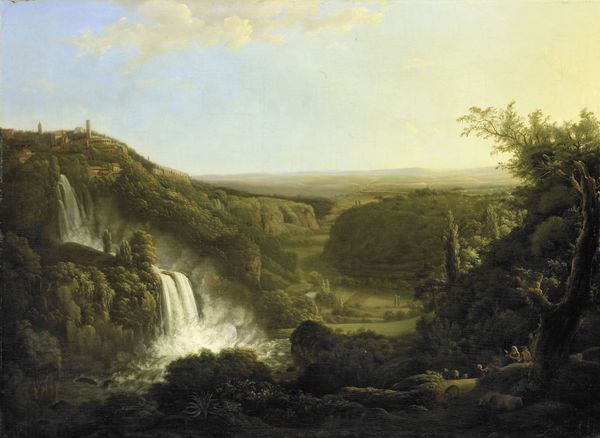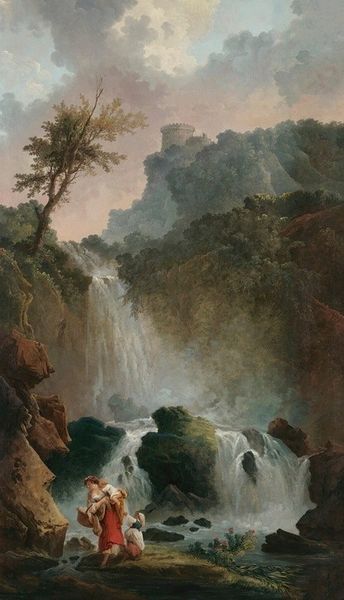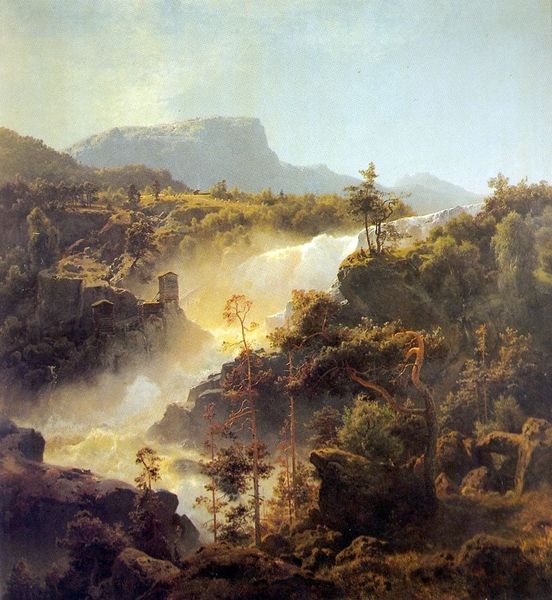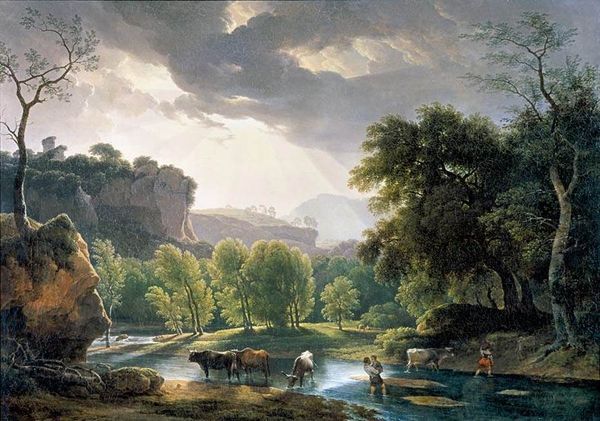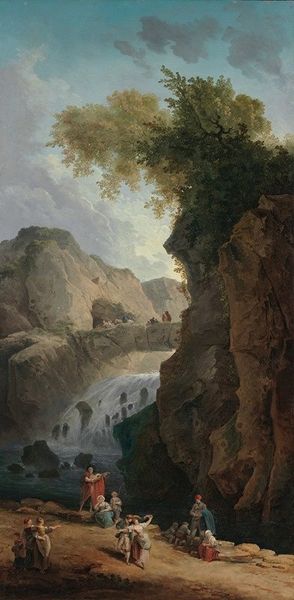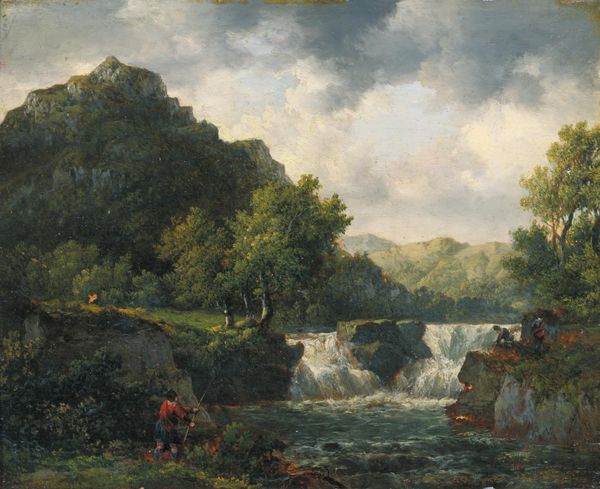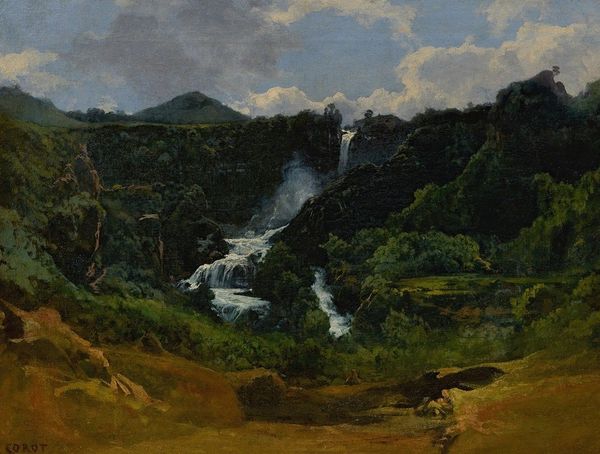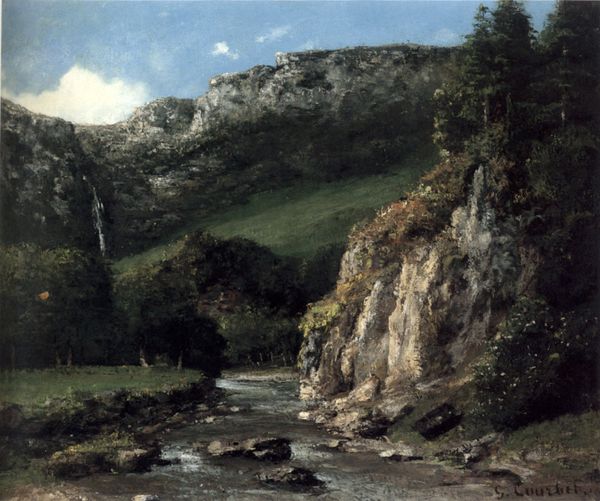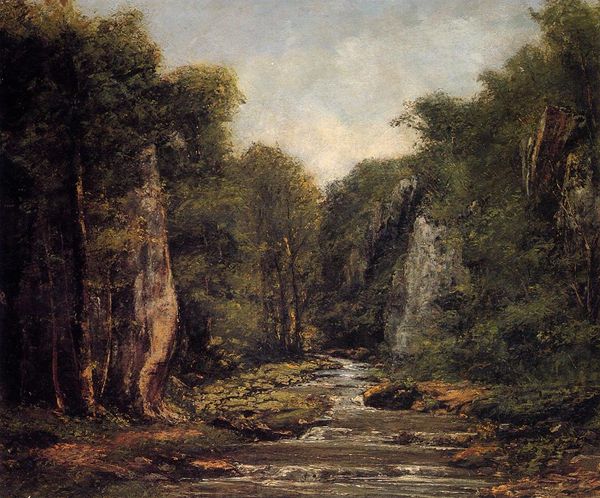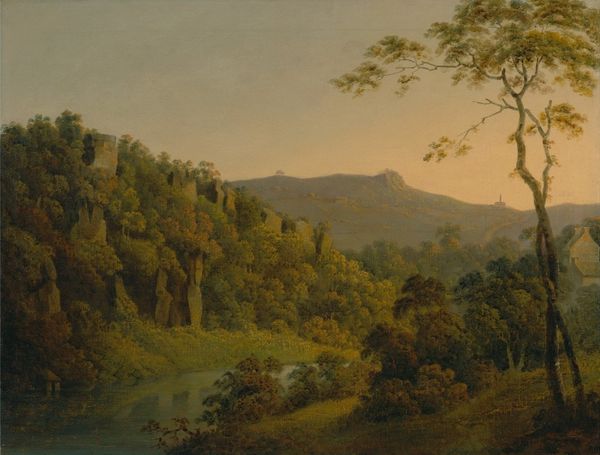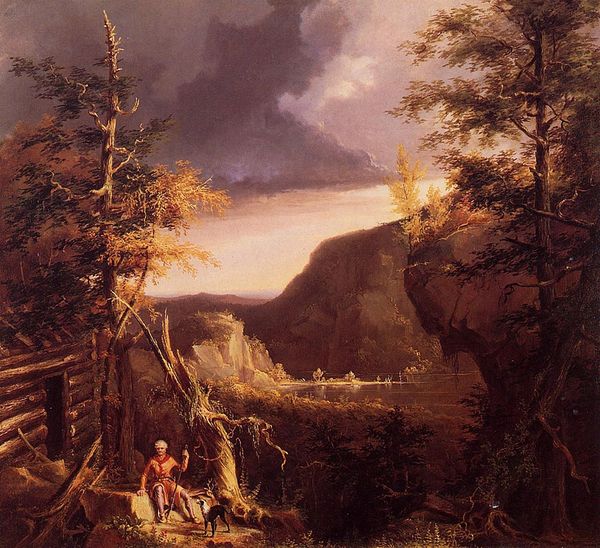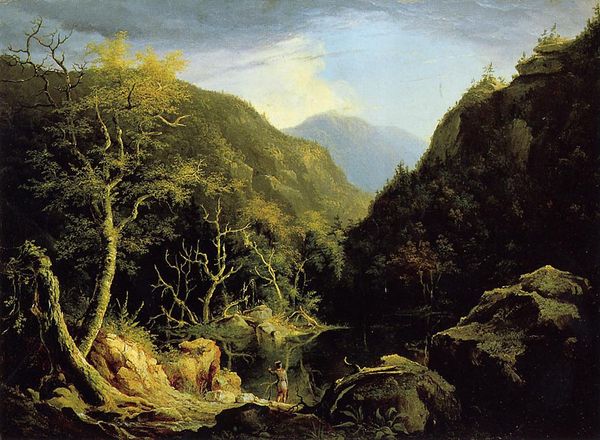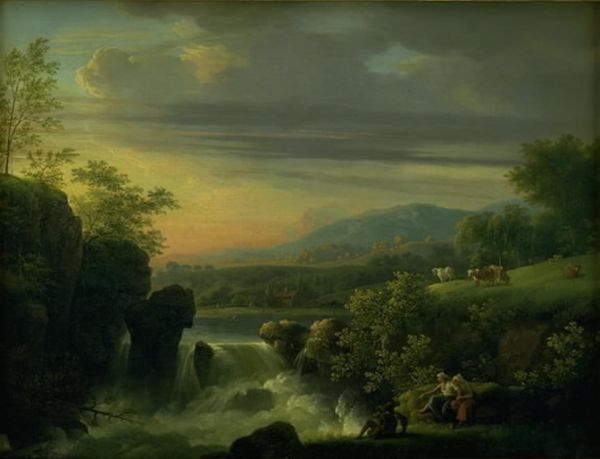
Genesee Scenery 1847
0:00
0:00
thomascole
Rhode Island School of Design Museum (RISD Museum), Providence, RI, US
plein-air, oil-paint
#
tree
#
sky
#
plein-air
#
oil-paint
#
landscape
#
waterfall
#
river
#
oil painting
#
forest
#
romanticism
#
natural-landscape
#
hudson-river-school
#
water
#
history-painting
#
nature
Dimensions: 99.1 x 129.5 cm
Copyright: Public domain
Curator: Today we’re looking at Thomas Cole’s "Genesee Scenery," an oil painting from 1847, currently housed at the RISD Museum. Editor: My first impression is that this isn't a neutral landscape. The greens and blues are so intensely vibrant, like he's not just representing the land, but almost… idealizing it. The waterfall plunges dramatically! Curator: Cole, a leading figure of the Hudson River School, was deeply concerned with the changing American landscape and this piece certainly reflects those anxieties. Notice how he positions the sublime power of nature, that waterfall, alongside subtle indications of human settlement—that small cabin and cleared pasture on the hill. Editor: That's the bit I find interesting— the pastoral scene at the top clashes with the wildness below. It looks a bit staged. Is that supposed to be a critique of Manifest Destiny or something similar? What was being made there on that idyllic farm? And what would a local resident have felt, having the “untamed wilderness” as their backdrop, but perhaps more accurately their tool, or obstacle? Curator: Possibly. Cole often used landscape to convey moral and historical narratives, especially the conflict between wilderness and civilization. He romanticizes it while simultaneously highlighting the impact of settlement. It's a layered statement about progress. Editor: Romanticize is the operative word! Oil paint creates a particular vision here. Consider what an arduous task moving a stretched canvas, pigments, and brushes out to the Genesee Valley would have been. Was this made *en plein air*? Or brought back to the studio later? What about the economic and social situation that let Cole engage with landscape, not as resource, but as "art?" Curator: The tags do note 'plein air' and given his practice, the immediacy suggests at least some portions were completed on-site, yes. And your point about social context is well-taken. The ability to dedicate oneself to painting landscapes—to perceive and portray them in this romantic light—was, of course, linked to specific economic and cultural conditions of the time. Editor: Exactly. This beautiful and powerful painting still reveals much more when you consider how materials and labour allowed it to be produced. Thanks to this lens, this image yields not only artistic beauty but insights into nineteenth-century America. Curator: Yes, viewing with an understanding of that materiality offers fascinating new perspectives to complement Cole's vision and environmental consciousness.
Comments
No comments
Be the first to comment and join the conversation on the ultimate creative platform.
